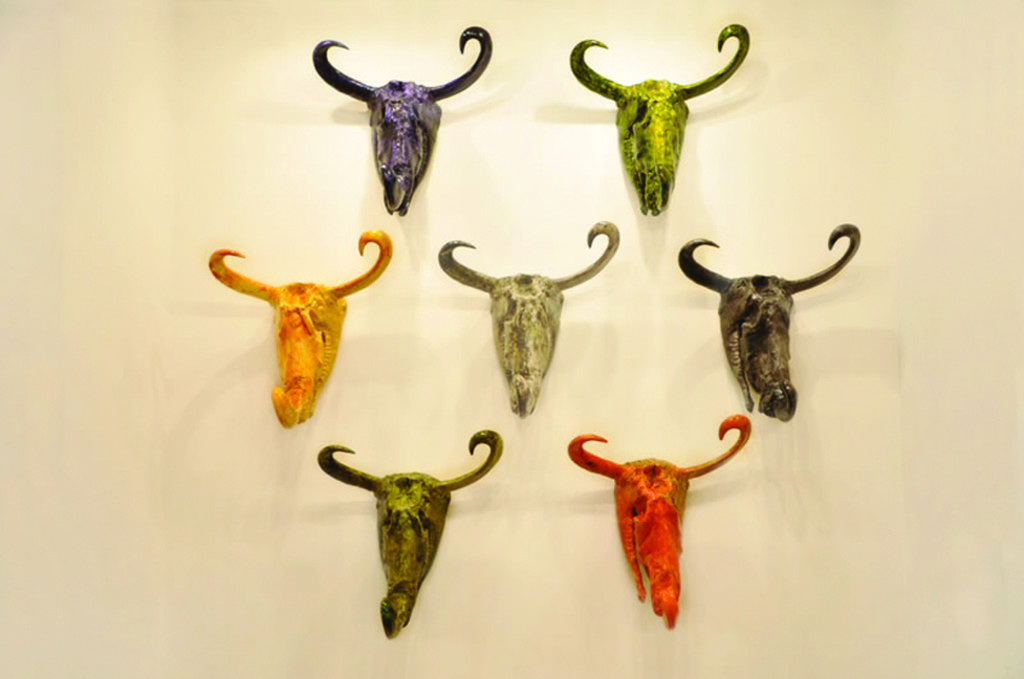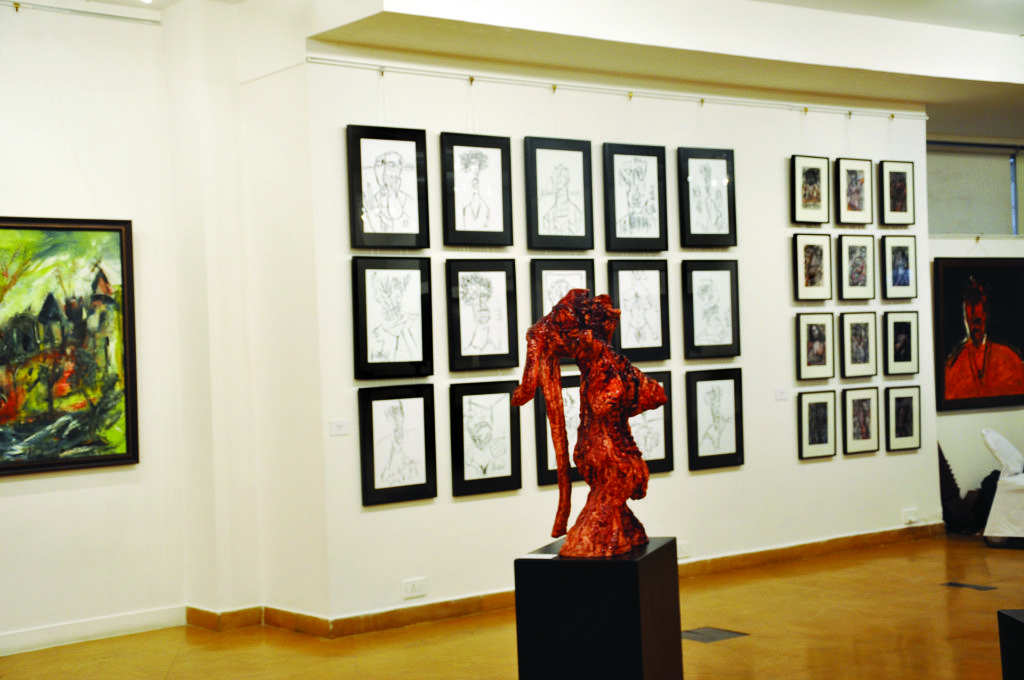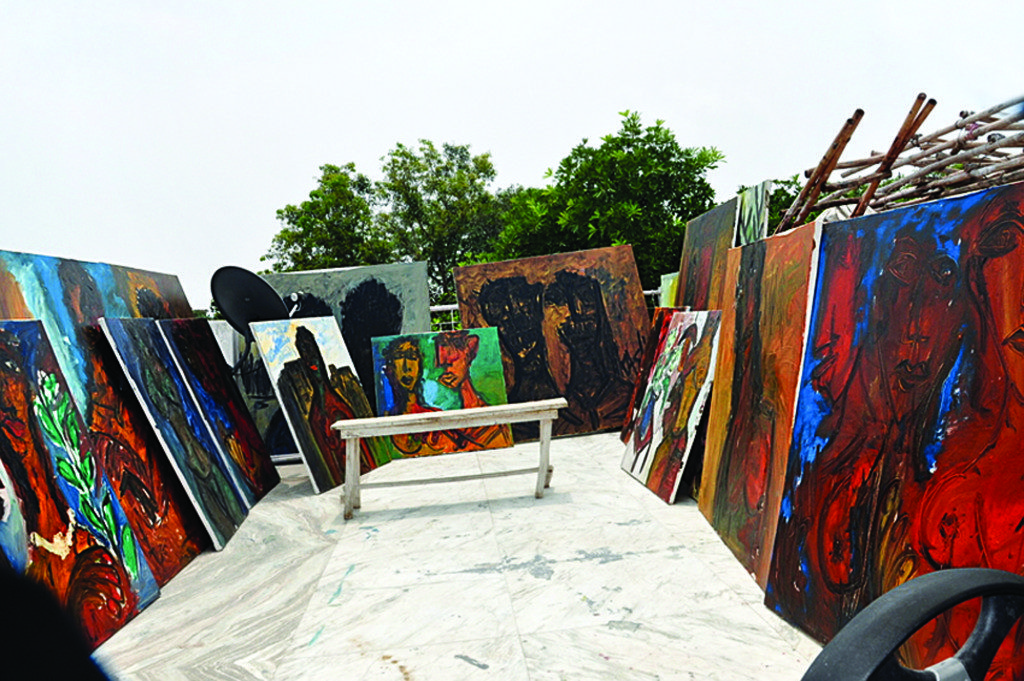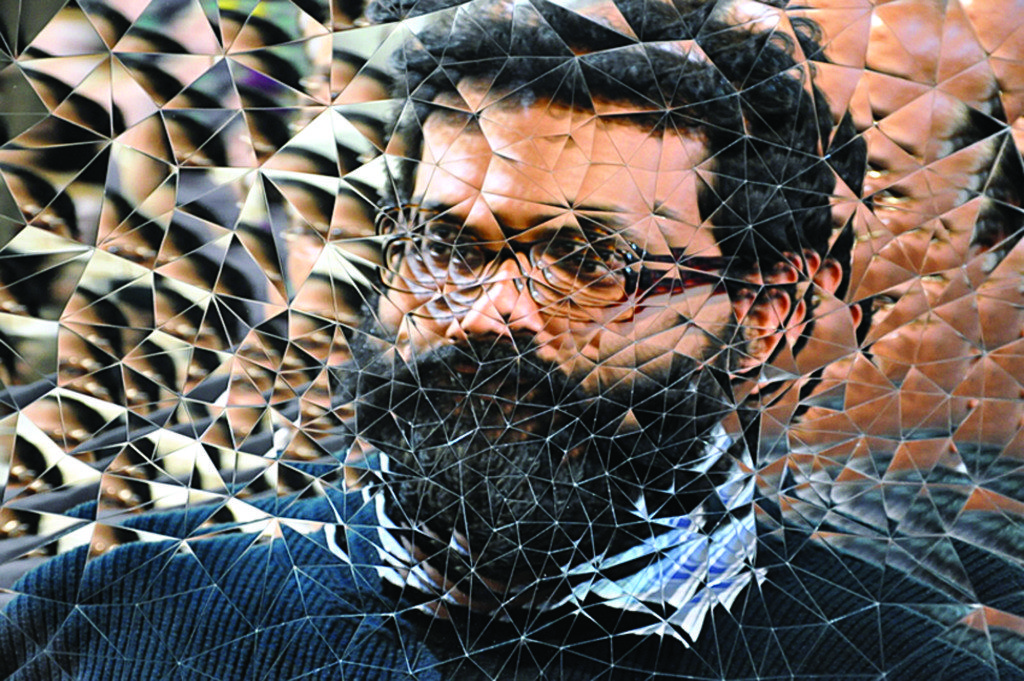Can drawings be the works of art dreaming in black and white? Drawings essentially, are abstract structures that embody the possibilities of a fully formed work of art whether it is a painting or a sculpture, a digital work or an architectural edifice. When an artist makes a drawing, which is as spontaneous as his breathing and blood flow, it becomes the real expression of his physical as well as mental state of being; a sort of simultaneous witnessing, visualising and translating with complete concentration and awareness or with total automatism. This is a sort of mark making with or without a purpose, often resulting into a body of registrations with autonomous existence even if they are not realized into other mediums. A visual artist, like a writer, makes all the efforts to hide and edit out than expose and in the process his drawings are generally kept away from the public eye, and are let out only when the artist makes deliberate attempts to show them for public perusal in privately held shows or publicly proliferated through digital mediums. This self baring comes with a price tag, of dignity, integrity and aesthetical permissibility because many of the drawings of an artist could carry highly objectionable and unpalatable visuals within their formats, which would eventually bring either public wrath or private scorn for him. However, when an artist dares to bare his drawings, especially with an introspective intention, that very effort becomes commendable for such exhibition/ism could make or break his creative career; it could bring total outrage or absolute embrace.

Such risk taking comes quite natural to Vikash Kalra, whose style of painting has been likened to the modern master, Francis Newton Souza. Each time he presents his works, it has almost become a norm that the art viewers are outraged or have gone completely in awe with his creativity. In the present exhibition, Kalra, however has chosen to display his ‘drawings’ in a collage mode, which is quite unlike other referential masters or even his own usual display strategies. At the same time it should be added to the critical views about his works that he prefers some sections of his creative ensembles to be exhibited in a collage mode. Collages are created out of discarded and disparate materials and objects in a particular format in order to create a new logically comprehensive visual form, which is aesthetically appealing and radically diversified from the usual norms of visual arts. Going by the traditional cubistic collages, we could say that there are two types of collages; analytical and synthetic. In Analytical collages, the artist tries to discern the materials in use and through their difference and the final merging of it into the resultant whole, achieves an aesthetic finality, which is appealing to both the eyes and human logic. In Synthetic collages, disparate materials and images are brought together in an effort to diffuse their differences using both visual and intellectual logic in order to produce a resultant work of art. In the case of Vikash Kalra, however collages have a different meaning.

Since 2006, Vikash Kalra has been exhibiting one or two sets of collages in his other predominantly painting or sculptural exhibitions. But a keen look at his works and exhibitions so far reveal that in each exhibition he brings a set of works or framed works or sculptures framed within the space in an effort to make them as a singular work of art. Here his attempt is to collapse their distinct identities as autonomous works of art. The artist, using his internal logic, places one piece of drawing or painting, which could be a series of portraits, nudes or even animal heads, in relationship with the other in the ensemble and the cohesiveness looks so strong that taking out one of them would end up in totally collapsing the work of art. But at the same time, if they are independently exhibited, without showing the possibility of them being together in a collage, they assume the nature of autonomous works of art, not even once betraying their closer affinities with the work of art seen/displayed next to it. When seen separately, they look like the members of a same family long lost by the trick of providence, standing in the same room but not knowing each other. They communicate and exchange glances once in a while but they never understand that they belong to the same family. But once they are introduced to each other, in the surprise embrace they look so comfortable together that it becomes almost impossible to separate them. Kalra’s collage works are like these family members introduced to each other in a crowded hall.

Kalra’s interest in creating collages comes out from his personal experience as a man who has donned many robes during his formative years. He had played the role of a pavement book seller, car dealer, restaurant owner and social worker. Often Kalra says that his work is like a collage made out of very disparate things, each of which looks so different and inconceivably odd with the other element. A pavement book stall seller could become a writer; a car dealer could become a car collector, a restaurant owner could become a good chef. That is the way our logic works. But a magazine seller could become a Formula One racer; a chef could be a great singer. Examples are abundant in history that many a successful people have done odd jobs before they became successful entrepreneurs. The aggregate of their life experiences help them to create the final picture of their successful lives and in a way their lives are collages of a lot of appeal. In Kalra’s case, he neither did excel in any of his former jobs nor did he become a successful entrepreneur. Instead, he became an artist and the life that he chose to live became an analytical collage. This aspect of variety and diversity exists in his works as well as the way he chooses to display them.

Each year, in his solo shows, Kalra has attempted visual collages. They look like islands of meanings in an ocean of words and symbols. This does not mean that the rest of the works are meaningless. They are meaningful when seen from the vantage and green point of this island. In a way, I could say that these collages are the focal points as well as clues of entry to the general visual field of Kalra’s aesthetics. This affinity for collages comes from his day to day experiences too. A quick visit at his studio would prove that one has entered a realm of variety. An artist’s studio cannot be absolutely clean (though many artists today prefer to keep their work spaces clean and organized like a corporate manager’s office room and desk); Kalra’s studio is in fact messy. But like any interesting artist’s studio, there is a methodical madness in his studio also. As a collector of things, he brings many varieties of vignettes from different places and literally litters his studio. These are the things according to him, which give meaning and life to the studio. Also his works vary in shapes and spaces. They are shape shifters and space shifters. They come in different sizes. While one of the walls displays a huge canvas and its work in progress, another wall must be a series of portraits done on small boards and neatly arranged. There are reds and blacks lying splattered all over, one could see white and blue sitting pretty in their large containers. While palette knife and broad brushes look absolutely tired after a hard day’s work, little pens and crayons look as if taking a nap. Together, they make a visual treat, an Alladin’s shop feeling. A collage can come out or an idea of collage can take shape in that space of the artist, at any given time.
This exhibition has a series of drawings, done in his conspicuous unavoidable style of the referred master, are exhibited in collage forms. They are collages because together they make sense; displayed separately they look more like studies for larger works or as I mentioned earlier in this essay, visual registrations that are not always meant for public viewing. But when they are brought out for public viewing there has to be logic. This logic can come in two different ways: One, the works could be kept in their original location (in sketchbooks or unframed papers) or they could be presented with a suitable foreword and seen in a folio kind of presentation. Somehow, Kalra avoids both these and goes for a collage presentation. This is a physical manipulation of space through pictorial frames in order to create a new meaning out of different drawings. They are like the frames of a graphic novel taken out of context and exhibited. But looking at it for longer durations would eke out meanings that would eventually take the onlookers to the mind of the artist.

Vikash Kalra is a self-taught artist and writer based in New Delhi whose work has been exhibited across India and is held in several private and corporate collections.